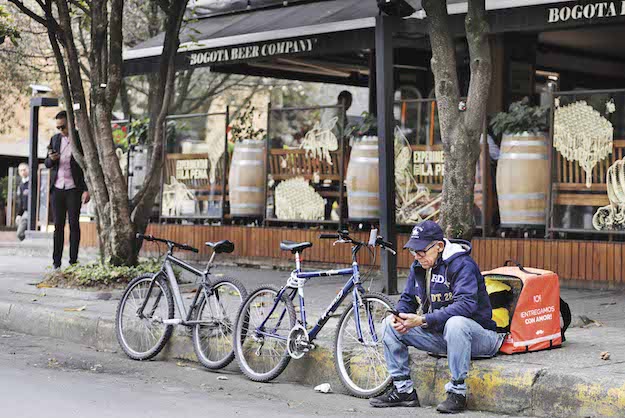This article is adapted from AQ’s special report on migration
Remittances are a $100 billion industry in Latin America, with money traditionally coming to the region from the United States and Europe. But the unprecedented level of intraregional migration is fostering completely new corridors, with flows now originating from countries like Costa Rica and Chile. The demand is also meeting with new ideas about supply: tech-based financial services like digital wallets and online transfers that cut costs for senders are giving a leg up for new local ventures to expand.
“The impact of this modernization is quite remarkable — the payment ecosystem is reaching the entire migrant population in Latin America, providing greater financial access,” Manuel Orozco, a remittances expert at the Inter-American Dialogue, told AQ.
Prior to January 2010, when the magnitude 7 earthquake devastated Haiti, there was simply no record of money being sent from Chile to the Caribbean nation. As Haitians left their homeland en masse following the disaster, the diaspora in the Andean country grew by 3,500%, and by 2019, Haiti was receiving $115 million in remittances originating from Chile, the equivalent of 1% of its GDP. Similarly, remittances to Haiti coming from the Dominican Republic have almost tripled since 2010.
And of course, flows originating in Colombia and heading to Venezuela have also grown exponentially. Almost a third of all Venezuelan migrants settled in the neighboring country, from which they sent home $442 million last year — compared to a flow of just $9 million in 2010.
For Orozco, the trend is clear: intraregional remittance flows will continue to grow. Of the almost 5 million Venezuelans who have left the country since 2015, most have settled within Latin America, and roughly 75% send money back home. And most likely will do so using an app or a computer. According to the Inter-American Dialogue, remittance pick-up via digital wallets is expected to exceed 10% of all transfers in the region by 2022.
As demand increases, the money transfer industry is expanding regionally with newer — and local — players entering the competition. An Inter-American Development Bank survey of startups in the region shows 285 startups offering payments and remittances—that’s 24% of all new tech business in Latin America. Migrants have limited credit history to be able to use traditional services, but in most cases, they have a cell phone.
—
Rauls is an editorial intern for AQ








